Introduction to Whiteboard Art

Whiteboard art is a creative and engaging way to express ideas, concepts, and messages using a whiteboard as the canvas. Whether you’re a teacher looking to enhance your classroom, a business professional aiming to present information more effectively, or simply an individual interested in exploring your artistic side, whiteboard art can offer endless opportunities for expression.
In this section, we will provide an introduction to the world of whiteboard art, exploring its benefits, versatility, and potential applications. We will delve into the different types of whiteboard art ideas, discuss the basic materials and tools required for creating whiteboard art, and provide a step-by-step guide to help you get started. Additionally, we will share some tips, tricks, and best practices to elevate your whiteboard art skills and showcase some unique whiteboard art ideas for various occasions.
Whether you’re a beginner or an experienced artist, this section aims to inspire and guide you on your journey to creating captivating and impactful whiteboard art. So, let’s dive in and unlock the potential of this dynamic and accessible art form.
Types of whiteboard art ideas
Whiteboard art offers a creative and dynamic way to express ideas, share information, or simply add a touch of visual interest to any space. Whether you’re using it in an office, classroom, or at home, there are countless possibilities for creating captivating whiteboard art. Here are some types of whiteboard art ideas that you can explore:
- Illustrations: One of the most popular types of whiteboard art is creating illustrations. This can range from simple drawings to intricate designs, depending on your skill level and the message you want to convey. You can draw anything from animals and plants to people and objects, allowing your imagination to roam free.
- Typography: Another exciting way to utilize whiteboard art is through typography. You can experiment with different fonts, styles, and sizes to create visually appealing quotes, slogans, or words. Typography on whiteboards can grab attention and convey a specific message effectively.
- Infographics: Whiteboards are also ideal for presenting information in a concise and visually engaging manner. With whiteboard art, you can create infographics that simplify complex concepts, display data, or provide step-by-step instructions. This type of whiteboard art is especially suitable for educational or informative purposes.
- Seasonal and holiday themes: Celebrate special occasions or change the ambiance of a space by incorporating seasonal or holiday-themed whiteboard art. From Halloween and Christmas to Valentine’s Day and Independence Day, you can create festive designs that bring a sense of joy and excitement to your surroundings.
- Interactive designs: Take whiteboard art to the next level by adding an interactive element. You can create puzzles, games, or challenges that invite others to engage with your artwork. This type of whiteboard art can be especially engaging in educational or team-building settings.
Remember, these are just a few examples of the types of whiteboard art ideas you can explore. The possibilities are truly endless, and it’s up to you to unleash your creativity and experiment with different styles and concepts. In the next section, we’ll discuss the basic materials and tools you’ll need to bring your whiteboard art ideas to life.
Basic materials and tools for whiteboard art
Creating whiteboard art requires a few essential materials and tools to ensure a smooth and successful process. Here are the basic items you will need:
1. Whiteboard
Choose a high-quality whiteboard with a smooth surface that allows markers to glide easily. Consider the size of the whiteboard based on your desired artwork dimensions.
2. Whiteboard markers
Invest in a set of whiteboard markers in various colors. Make sure they are easily erasable and do not leave behind residue or stains on the whiteboard surface.
3. Eraser
Use a soft eraser specifically designed for whiteboards to remove any mistakes or to clean the whiteboard after creating your artwork.
4. Cleaning solution
To maintain the longevity of your whiteboard and ensure easy erasing, use a whiteboard cleaning solution or a mixture of water and mild detergent to clean the surface regularly.
5. Ruler or straightedge
For precise lines and measurements, have a ruler or straightedge handy. It will help you create clean and straight edges in your whiteboard art.
By having these basic materials and tools at your disposal, you will be well-prepared to embark on your whiteboard art journey. In the following section, we will provide you with a step-by-step guide on how to create stunning whiteboard art.
Step-by-step guide to creating whiteboard art
Creating whiteboard art can be a fun and creative way to express yourself. Whether you’re a beginner or an experienced artist, follow these step-by-step instructions to create your own stunning whiteboard art.
Step 1: Prepare your whiteboard
- Clean the whiteboard surface thoroughly to remove any dust or stains.
- Ensure that the whiteboard is dry before starting your artwork.
Step 2: Sketch your design
- Use a pencil or a dry erase marker to sketch your design lightly on the whiteboard.
- Take your time to plan the composition and layout of your artwork.
Step 3: Outline your design
- Select a permanent marker or a whiteboard marker with a fine tip.
- Start outlining your sketch, paying attention to the details and contours of your design.
- Make sure to use confident strokes and maintain a steady hand.
Step 4: Fill in the colors
- Choose the colors you want to use in your artwork.
- Begin filling in the colors, starting from the larger areas and working towards the smaller details.
- Blend the colors smoothly and evenly, using a dry erase marker or a sponge.
Step 5: Add shadows and highlights
- Use a darker shade of the main color to add shadows and create depth in your artwork.
- Add highlights with a lighter shade to enhance the three-dimensional effect.
- Experiment with different shading techniques to achieve the desired result.
Step 6: Clean up and finalize
- Erase any remaining pencil marks or stray lines with an eraser or a dry cloth.
- Inspect your artwork for any touch-ups or adjustments that may be needed.
- Step back and admire your finished whiteboard art!
Remember, practice makes perfect. Don’t be afraid to experiment with different techniques and styles. With time and dedication, you’ll be able to create impressive whiteboard art that will captivate any audience.
Tips and Tricks for Whiteboard Art
Whiteboard art is a creative and fun way to spice up any space, whether it’s an office, classroom, or home. To help you make the most of your whiteboard art, here are some tips and tricks to keep in mind:
1. Plan your design
Before you start drawing on the whiteboard, take a few moments to plan out your design. Consider the space available, the message or theme you want to convey, and any specific elements or details you want to include. Sketch out a rough draft on paper to visualize your ideas.
2. Use high-quality markers
Invest in good-quality markers that are specifically designed for whiteboard use. These markers have a more vibrant and long-lasting ink, ensuring that your artwork remains vivid and clear for a longer time. Avoid using regular markers or pens, as they may not erase properly and can leave stains on the whiteboard.
3. Experiment with different techniques
Don’t be afraid to try out different drawing techniques to add depth and visual interest to your artwork. Use shading, cross-hatching, and blending to create different textures and effects. You can also experiment with different marker sizes for varying line thicknesses.
4. Practice good erasing techniques
Erasing mistakes or changes is an important part of whiteboard art. Use a clean, dry cloth or a whiteboard eraser to remove any unwanted lines or smudges. For stubborn marks, you can use a whiteboard cleaner or rubbing alcohol to get rid of them. Remember to wipe the board clean before starting a new design.
5. Add interactive elements
Make your whiteboard art more engaging by incorporating interactive elements. For example, you can leave space for people to add their own doodles or messages. You can also create removable pieces that can be rearranged or replaced, allowing for interactive storytelling or educational activities.
6. Get inspired by other artists
Seek inspiration from other whiteboard artists to expand your artistic repertoire. Explore online galleries or follow whiteboard art accounts on social media to discover new techniques, styles, and ideas. Take note of what you like and incorporate those elements into your own art.
7. Have fun and be creative
Above all, remember that whiteboard art is all about creativity and self-expression. Don’t be afraid to let loose and have fun with your designs. Experiment with different themes, colors, and styles. Embrace imperfections and enjoy the process of creating something unique and visually appealing.
By following these tips and tricks, you can enhance your whiteboard art skills and create stunning designs that will captivate and inspire others.
Whiteboard Art Ideas for Different Occasions
Whiteboard art is a versatile form of expression that can be used for various occasions. Whether you want to spruce up your office, add a personal touch to your home, or create memorable displays for special events, here are some whiteboard art ideas to inspire you:
1. Office Decor
- Create a motivational quote or phrase to boost productivity and morale.
- Design a monthly calendar to keep track of important dates and deadlines.
- Showcase your company’s values and mission statement through visual representations.
2. Home Dè cor
- Transform your kitchen into a recipe hub by drawing your favorite dishes.
- Add a touch of nature with botanical illustrations or landscapes.
- Create a family message board to keep everyone informed and connected.
3. Special Events
- Design a personalized greeting for birthdays, anniversaries, or weddings.
- Create a countdown or progress tracker for fundraising or charity events.
- Make a welcome sign or directional guide for conferences or trade shows.
Remember, the possibilities are endless when it comes to whiteboard art. Don’t be afraid to experiment and let your creativity shine. With the right ideas and tools, you can turn any occasion into a memorable masterpiece!
Conclusion
Whiteboard art is a captivating and versatile form of creative expression that can be enjoyed by people of all ages and backgrounds. Whether you are a seasoned artist or a beginner looking to explore your artistic side, whiteboard art offers endless opportunities for inspiration and innovation.
In this guide, we have covered various aspects of whiteboard art, from an introduction to different types of ideas, basic materials and tools, and a step-by-step guide to creating your own masterpiece. We have also provided some useful tips and tricks to enhance your whiteboard art skills.
Furthermore, we have shared whiteboard art ideas for different occasions, helping you bring a touch of creativity to your home, workplace, or special events. From birthdays and holidays to office presentations and classroom activities, whiteboard art can add a unique and eye-catching element to any space or occasion.
Remember, the key to creating beautiful whiteboard art lies in practice, patience, and experimentation. Don’t be afraid to explore different techniques, styles, and themes. Let your imagination run wild and see where it takes you!
So, grab your whiteboard markers, erase any doubts, and embark on your whiteboard art journey. Enjoy the process, have fun, and let your creativity shine!



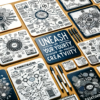
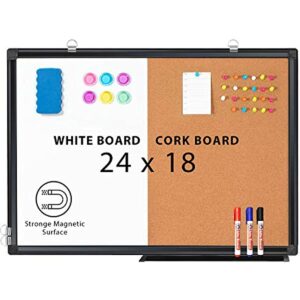
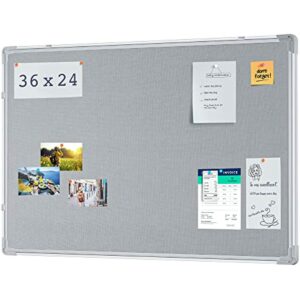
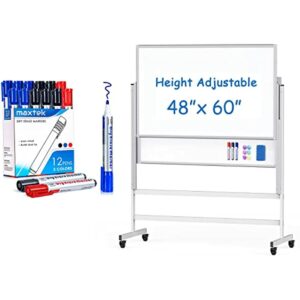
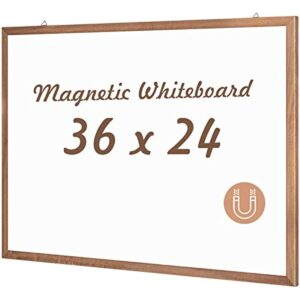
Leave a reply